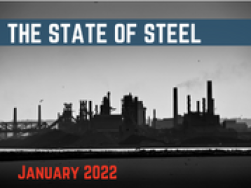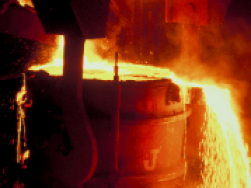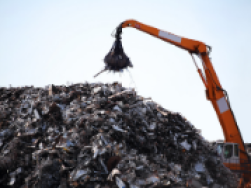State of Steel - January 2022
Pricing - Will it continue to go down or flatten out?
Steel price increases have seemed to peak in November and are now flattening out through December and into January. Coil continues to be in high demand, but the tubing mills are now seeing a large relief in the form of shorter lead times. We saw a steel price index decrease in 3 out of 4 weeks in the month of December. Even though we have seen a recent decline in the last 2 months, the CRU index has still seen a 48% increase in the steel index since a year ago. Structural tubing has continued to slowly decrease in pricing since November/December. Most structural mills have reduced their pricing by $200 per ton since the end of November. This is the second decrease in structural tubing in over a year. With regards to DOM, we still have not seen an increase or decrease since August 20th. Most DOM mill pricing has increased 13 times for a total of 89-92% overall since the beginning of November 2020. Lead times are still very drawn out for mechanical tubing thus less urgency to reduce pricing. Cold drawn and hot rolled seamless tubing has seen 2 price increases in the last 4 months but has since slowed. The below charts reflect a current listing of all price increases/decreases on tubing that we have seen since late August of 2020.
Nucor informed customers this week that it will maintain February plate prices unchanged from January levels at $1,815/ton. (Source: Platts)



Pricing on Dura-Bar continuous cast iron bar has increased in December due to base prices being raised by an average of 8% to 10%. The most current base price increases come just months after recent base price increases in February of this year and additional significant base price increases (of 10% to 30%) implemented on both July 1st, 2021, and August 1st, 2021. In addition to base price increases, the surcharges have also risen over the last year. The below chart details the Dura-Bar surcharges over the last year or so.

Lead Times
Understanding lead times for steel products are important to every participant in the supply chain. Lead times for steel products are as follows (as of 01/07/22):
Average HRC lead times increased last week to 4.0 weeks. This was the first weekly increase in the last 24 weeks. However, HRC lead times are still down from their all-time high of 9.8 weeks reached in January 2021. Other product lead times were flat to lower last week with CRC lead times at 5.8 weeks, HDG lead times at 6.5 weeks, and plate lead times at 6.1 weeks. (Source: Platts)
DOM Tubing lead times continue to be stretched anywhere from 25 to 32 weeks primarily now due to backlog. We continue to see lead times grow and are now seeing availability not free up until August/Sept of 2022.
Structural Tubing mill lead times have improved and are running approximately 6-8 weeks upon receipt of order. Common sizes we can get sooner.
Dura-Bar Continuous Cast Iron mill lead times are approximately 10-14 weeks depending on size, grade, and finish. If it’s a large bar, special grade, size, or shape then the lead time could be even longer.
Metal Production
In the week ended January 1, US raw steel production decreased 0.9% week-over-week to 1.785mt (+9.5% YoY). US capacity utilization was 80.9% vs 73.4% last year. (Source: AISI)
Scrap
As of yesterday, January scrap prices have yet to settle. However, mills in Detroit were reportedly warning suppliers to expect a decline of $50/ton month-over-month, and possibly more. This is below initial expectations for prices to be down $30-$40/ton. (Source: AMM) The expected decline can be attributed to the weakening scrap export market and robust scrap supply in December. A decline in January goes against a typical seasonal increase, with US scrap prices increasing in January in 10 of the prior 12 years (excluding 2014 and 2018). (Source: Platts)
Capacity Issues
US Steel reportedly scheduled a 25-day maintenance outage starting March 3 at its Granite City, Illinois mill. (Source: AMM)






